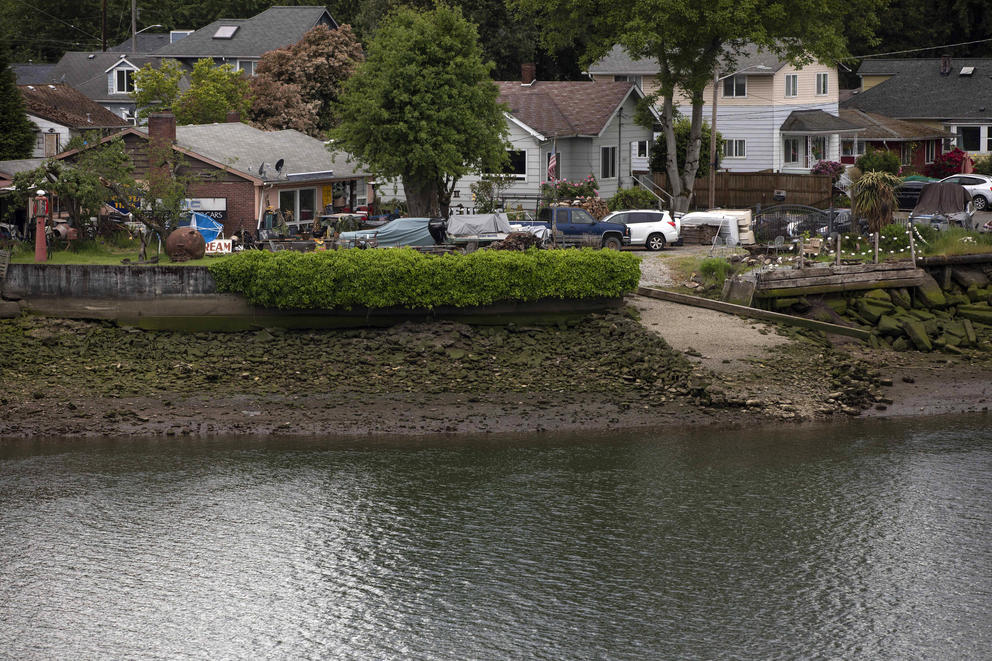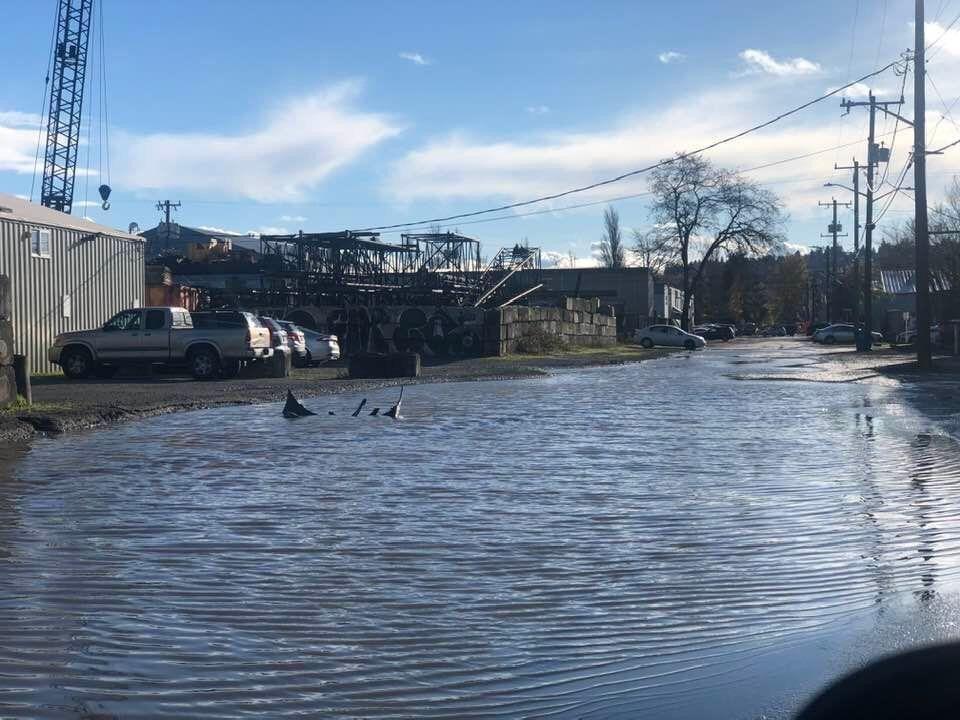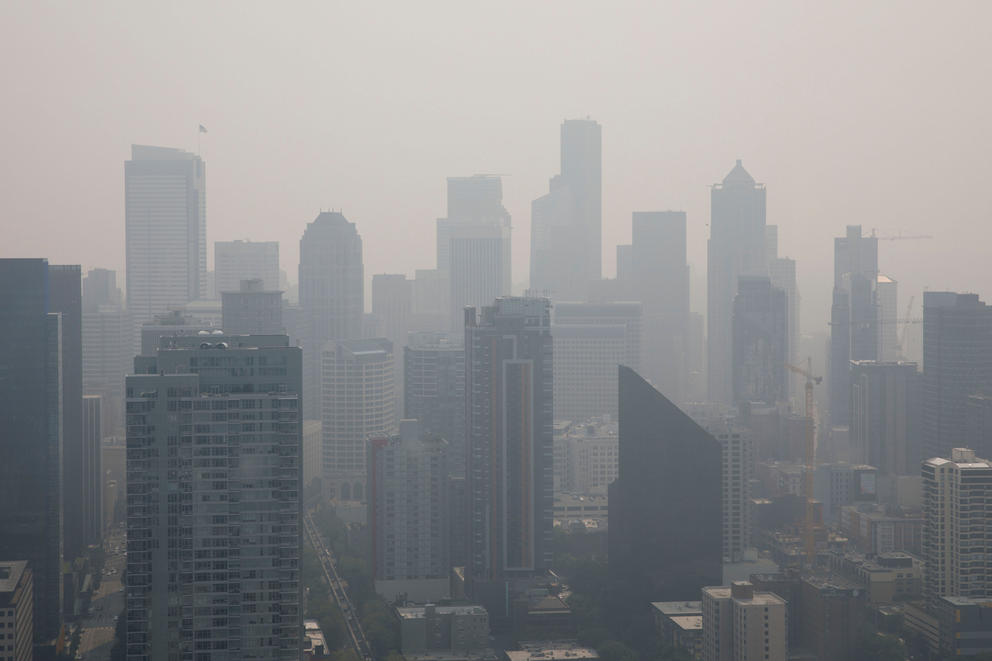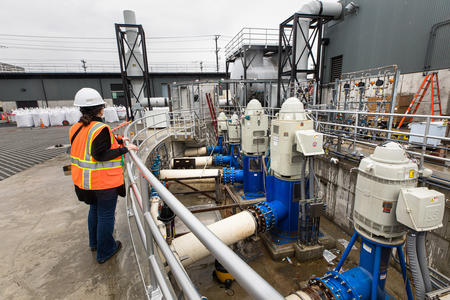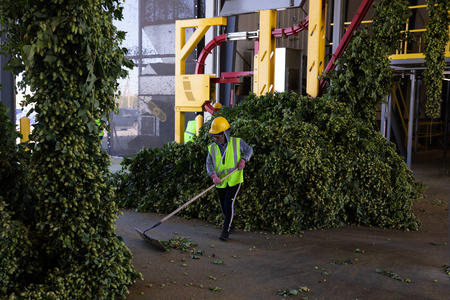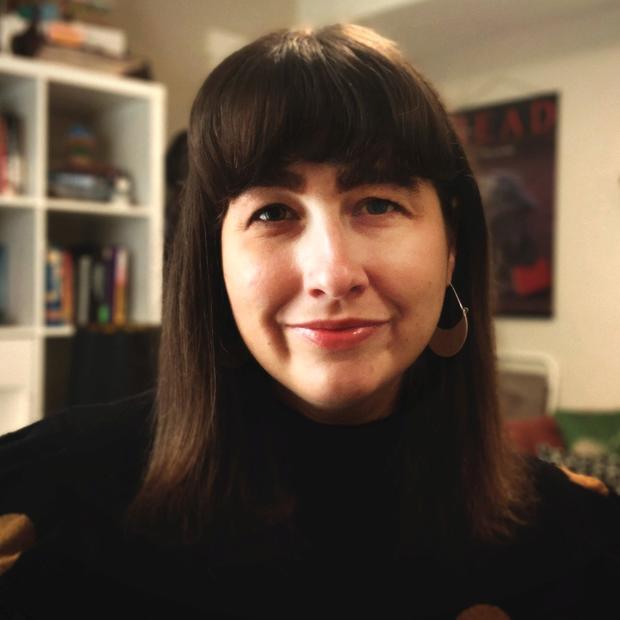The flood-prone, polluted waterway is a federally designated Superfund site resulting from the toxic chemicals left by industry along the river’s shores. Today, the Duwamish River faces yet another threat that not only causes more environmental harm but also brings climate stress and grief to the people who live nearby.
Some South Park residents are already familiar with that environmental grief. For them, climate stress manifests in the embarrassment, frustration and anxiety they feel when wastewater floods back into their homes during high tides and heavy rains.
The city of Seattle projects 2 to 4 feet of sea level rise by 2100 in South Park between Marginal Way and the river. Nearly 300 properties, including homes, businesses, and parks, are within that area. This means that increased water levels brought by winter storm surges and high tides that usually happen once a year will become monthly occurences, according to Seattle Public Utilities’ 2019 resiliency assessment.
Sea level rise is already causing frequent tidal flooding, because it often coincides with extreme rainfall and insufficient drainage from the neighborhood’s combined sewer overflow systems, which direct large amounts of excess water into nearby waterways. Sometimes the system, which is now considered an antiquated design, gets overwhelmed. In those cases, rather than draining away from a home, the sewer line pushes waste back through the plumbing.
Standing water fills the street along a section of Fifth Avenue South in South Park in early January 2022. Exceptionally high tides caused the flooding, which is becoming an annual occurrence for parts of neighborhood and could get worse as sea levels rise. (Courtesy of the Duwamish River Community Coalition)
Eighteen homes in South Park are hooked in to the county’s combined sewer system, which floods during the Duwamish River’s high tides and heavy rain. Robin Schwartz, who lives in the neighborhood, said many of her neighbors find standing wastewater in their basements at least once a year. Those floods contain untreated human waste, as well as harmful viruses and bacteria that can remain in people’s homes for a month even after the water is gone.
King County is designing a new stormwater and wastewater tank for mitigation in South Park, with construction scheduled for 2025. Meanwhile, Schwartz and her neighbors bear both the emotional and financial stress that comes along with the flooding.
“My neighbors who are low-income, people of color and immigrants, they are left to clean it up,” said Schwartz, who leads the Duwamish River Community Coalition’s development and advocacy program. “Climate change is becoming more and more of an issue with heavier rainfalls and way more flooding events the last few years. It’s absolutely chronic.”
Climate change and stress
Several names have emerged to describe the mental health implications that come with a changing planet: climate anxiety, solastalgia, eco-anger.
Climate stress affects everyone’s nervous system differently, according to Emily Wright, founder of We Become, an environmental justice organization. In their work, Wright, who’s also an adjunct professor in Seattle University’s environmental science and psychology departments, explores how climate change affects emotional health, especially among people who disproportionately experience flooding, extreme heat and pollution.
To better understand this, Wright developed the Climate Stress Response Map, a framework that ties emotions to how the nervous system perceives a threat. Where people land on that spectrum depends on various factors, including lived experience, race, gender, class and ability. A natural disaster could trigger a person’s fight response, which could result in getting involved in a social movement, or it could cause someone to disassociate because of stress and ignore the situation.
“I talk about climate trauma because it’s traumatic, and not only with huge events and acute moments of extreme heat and flooding, but it’s also just living with it,” Wright said. “It just increases the baseline level of stress.”
Many in Seattle already experience challenging emotions during the darker, rainier months from October to July that some have come to call “The Big Dark.”
Nearly 30% of people in Seattle reported experiencing anxiety and depression in 2021, according to the latest annual report from the National Center for Health Statistics and the U.S. Census Bureau, which sought to gauge households’ emotional response to the pandemic.
Data for 2022 until May show a similar trend, with 28% of respondents reporting symptoms for the year so far.
January and February 2021 hit a high of 46% reporting anxiety or depression. While seasonal affective disorder is relatively common in winters, that season was exceptionally chilly and wet, hitting the coldest week on record at the time.
Seattle's typically light rains have also become heavier because of climate change. As the atmosphere warms, it's able to hold a greater amount of water, retaining it like a sponge. When met by strong winds, that water can fall fast and hard. This doesn’t mean more frequent rains throughout the year. The past 20 years have brought a tendency for drier summers, and climate models indicate the same is likely for the future, according to the Office of the Washington State Climatologist. With that come prime conditions for wildfires, which have seemingly created their own season as they become more frequent, while bringing on new mental health implications for the region.
Facing environmental injustice
While the Household Pulse Survey showed a steady downward trend in reported anxiety and depression symptoms from March through July in 2021, it peaked back up in August, when heat and wildfire smoke covered the region.
Megan Slade, a licensed mental health counselor who serves on the Beacon Hill Council’s environmental justice task force, has observed that people tend to experience climate distress more during periods of wildfire smoke. Slade is concerned about how the impacts of climate change coincide with existing environmental issues caused by humans.
“If you're already feeling the effects of air pollution, and then heat traps air pollution, then it just kind of makes it hover with us longer. And then you have that added layer of the wildfire smoke, which adds more particulate matter, like, what does that do to us?" she said.
Of Beacon Hill’s roughly 40,000 residents, 73% are people of color and 40% are immigrants, according to the neighborhood’s environmental task force.
In addition to breathing unhealthy air from wildfire smoke, Beacon Hill residents also live in the flight paths of Boeing Field and the Seattle-Tacoma International Airport. Planes taking off from and landing at the airfields release ultrafine particles from engine exhaust, which are blown toward the neighborhood. The exposure from particulate matter can cause cardiovascular problems, respiratory issues, low birth weight, cancer and central nervous system problems. The smaller the particulates, the deeper they can get into lungs and bloodstreams.
Many families have been in the neighborhood for multiple generations and, without updates, their homes likely don’t have proper insulation or they can’t afford high efficiency particulate air, or HEPA, filters. Newer residents of these older homes face similar problems, according to Maritza Lauriano Ortega, environmental justice educator and organizer at El Centro de la Raza.
Ortega and Slade work with those residents as part of the “Fix the Harm” campaign, which aims to generate awareness about existing and future environmental threats in the community. During their outreach, Ortega heard that many residents feel the warmer temperatures and effects of air pollution, but they don’t know why it is happening. Ortega conducts educational meetings at El Centro and offers translated informational pamphlets on pollution and climate change to help older residents and parents understand the risks.
“They told me, ‘Oh, yeah, this explains maybe why I’ve been feeling this way,’ or ‘why I have been really stressed out since I moved here,’” Ortega said. “And it affects their kids as well. … They notice it at such a young age.”
One of those kids told Ortega that, ever since an elementary school field trip was canceled by wildfire smoke, he has noticed he and his classmates spend more time inside.
Opening up about climate grief
Between Seattle’s traditional gloomy winter weather and the so-called “smoke season,” many people are spending more time indoors. For some, that means canceled plans and isolation from family and friends. In addition to a sense of loss for their own experiences, people can also feel saddened by the disappearance of a natural world they once knew.
Some clinical psychologists call these feelings “climate grief.”
Seattle-based therapist Andre Bryant’s clinical training had not prepared him for the ecological impacts on mental health when his clients started expressing feelings around the environment. He started researching what would become climateandmind.org, a resource where people can understand climate disruption and find help.
“When we either experience a loss or project into the future a loss, in terms of our environment, in terms of our security, in terms of what options that we or family or human beings or other species are going to have in the future, we feel sad about that, because it's something we care about being taken away,” Bryant said.
When Bryant started exploring the physiological response to ecological stress and anxiety, it used to be mostly activists and scientists who could identify their source of climate distress. He also observed that groups who aren't in power, such as young people or those historically excluded from elected office, can carry a particularly heavy emotional burden. Some feel hurt because, although they will live with some of the worst effects of climate change, they aren’t receiving significant help from local, state and national leadership.
Now, because of increasing awareness about climate change’s mental health impacts, the public is better at identifying it, too. Bryant believes that by talking about these feelings with loved ones or a therapist, people can begin to feel less isolated.
“The wildfire smoke, the heat dome we had here last summer definitely led people to start thinking … this is happening to us. Now we're seeing the impact. And that awareness does cause distress, anxiety,” Bryant said. The more people talk about this openly, the better chance that will lead them to take some action, he added.
Through conversations about our emotions, people can then channel energy into responding to the climate crisis, whether that means taking care of their family’s personal needs or joining a community movement to advocate for better policies, according to both Bryant and Wright. Such activism can directly result in resources for stronger infrastructure, trauma prevention and holistic health services.
It’s why Lopez and the Duwamish River Community Coalition take people out on educational boat tours. Their conversations throughout the Duwamish Valley have resulted in various action plans for flooding mitigation and air pollution.
Lopez believes that people need to understand the historical context of environmental injustice to relate to the advocacy needed to make adjustments for a more climate resilient future.
“Share what you learn today with someone else,” she told the passengers. “Part of the advocacy is to tell the story.”

